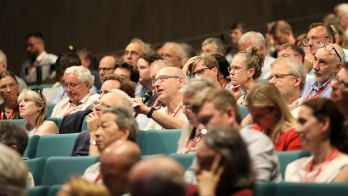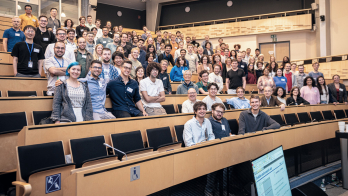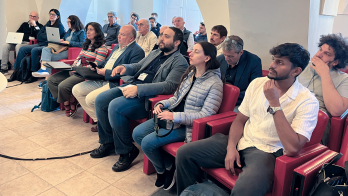Searches in LHC data that do not depend on specific theoretical models provide a valuable complement to optimized, model-dependent searches because they have the capacity to uncover hints of the completely unexpected. In this spirit, the ATLAS collaboration has recently looked for events with like-sign leptons and three or more leptons, using the full 2011 LHC data set of nearly 5 fb–1, in the pursuit of signs of new physics. Unfortunately, no excess events compared against the Standard Model have been observed. However, the analyses have provided the information needed to set limits on a range of models and to set limits on the production of doubly charged Higgs bosons.
Prompt like-sign lepton pairs are rarely produced in Standard Model processes but they may be produced by fourth-generation quarks, supersymmetry, universal extra dimensions or processes in non-Standard Model Higgs models or new models. A recent study by ATLAS selected isolated electrons and muons and divided the events into dielectron, dimuon, and electron-muon categories. This analysis yielded upper limits on the cross-section of anomalous production of like-sign lepton pairs ranging between 1.7 fb and 64 fb (ATLAS 2012a). An extension to the analysis set limits on the production of doubly charged Higgs bosons decaying to pairs of electrons or muons (ATLAS 2012b).

Events with three or more prompt leptons in the final state are also rare in the Standard Model. A recent search for multilepton events by ATLAS identified isolated electrons, isolated muons and hadronically decaying taus and found only 1827 events with three or more leptons. These events were divided into four categories; depending on whether or not a Z boson was reconstructed from two opposite-charge electrons or muons in the event, and whether or not a tau candidate was present.
The figure shows results for these four categories: the limits on the number of events from non-Standard Model sources have been calculated and converted into limits on the “visible cross-section”, i.e. the cross-section that is observable after event selection. The limits on the visible cross-section are given as a function of increasing lower bounds on the missing transverse momentum, a quantity that may be large in models with new physics. The smallest lower bound, “X”, is 0 GeV for the off-Z channels (no reconstructed Z) and 20 GeV for the on-Z channels (with reconstructed Z). Limits are shown for events with more than 100 GeV of transverse momenta for the jets in the event (HTjets); an upcoming publication includes the corresponding limits for lower values of HTjets and other variables of interest. These visible cross-section limits can be converted into upper limits on the cross-section for many specific models, including the doubly charged Higgs and new theories yet to come.
Further reading
ATLAS collaboration 2012a arXiv:1210.4538 [hep-ex].
ATLAS collaboration 2012b arXiv:1210.5070 [hep-ex].








